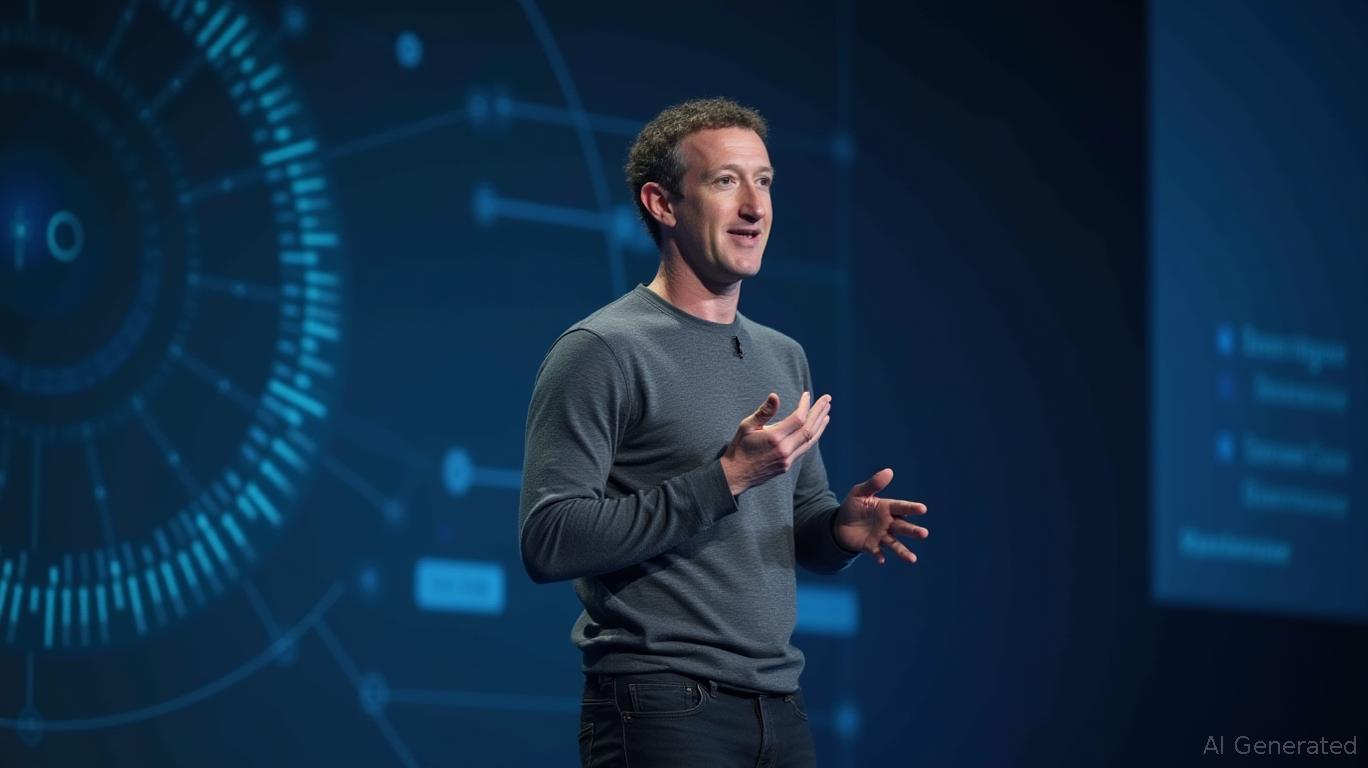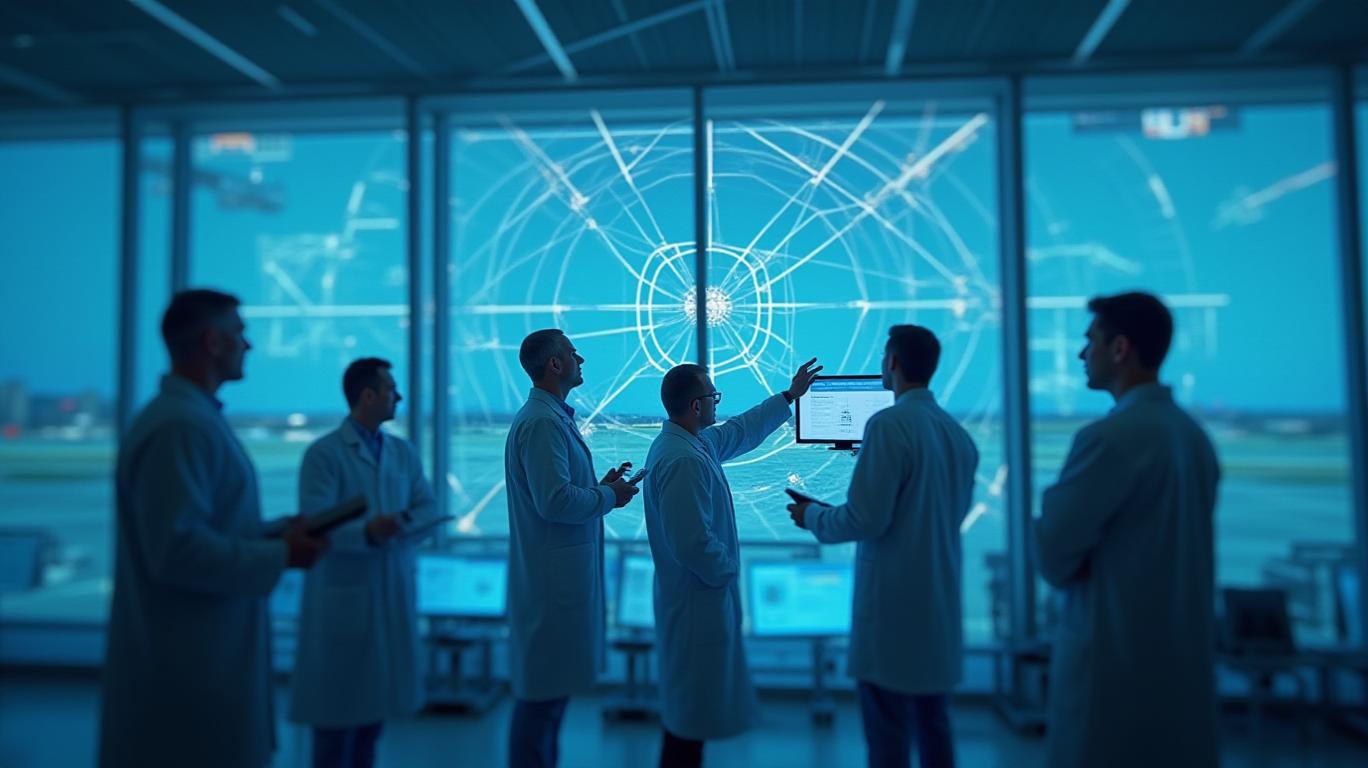Sky's the Limit: Investing in U.S. Air Traffic Control Modernization Amid Contract Turbulence
The U.S. government’s push to modernize its aging air traffic control (ATC) infrastructure has sparked a multi-billion-dollar opportunity for investors. With proposals totaling over $30 billion in funding and a timeline stretching through 2029, the sector is ripe for disruption—but not without risks tied to contractual battles, ethical dilemmas, and systemic challenges. This article explores the investment landscape, key players, and critical factors shaping returns.
Ask Aime: What's the $30 billion air traffic control investment opportunity?

The Funding Bonanza: A Timeline of Modernization
The Biden administration’s 2021 Infrastructure Investment and Jobs Act allocated $25 billion over five years for ATC upgrades, with $1 billion already earmarked for 2025. The White House’s FY2026 budget added $13.8 billion for FAA operations and $824 million for facility upgrades, while the House’s April 2025 reconciliation proposal introduced an additional $15 billion package. This funding targets critical areas:
- $4.7B: Telecommunications infrastructure (fiber, wireless, satellite systems).
- $3B: Radar replacements, including a $450M down payment for multiyear upgrades.
- $2.64B: Modernizing ATC towers and TRACON facilities.
The urgency stems from high-profile safety incidents, including a January 2025 midair collision near Washington, D.C., which exposed systemic risks tied to legacy systems like floppy disks and copper wiring.
Verizon’s role in the FAA’s $2.4B contract (awarded in 2023) to upgrade its communications backbone has been overshadowed by Elon Musk’s Starlink push. The FAA’s Enterprise Network Services (FENS) program aims to connect 4,600 FAA sites, but Musk claims Verizon’s system is “breaking down rapidly,” advocating for Starlink terminals as an emergency fix.
The Contract Controversy: Verizon vs. Starlink
The battle between Verizon and Starlink (a SpaceX subsidiary) hinges on technical reliability, cost, and ethics:
1. Verizon: Defends its fiber-optic solution as “ready to deploy,” but faces criticism over delays and Musk’s public attacks. The contract’s termination could trigger lawsuits, given its 15-year term and $2.4B price tag.
2. Starlink: Offers terminals at no upfront cost, leveraging its satellite network for remote connectivity. However, Musk’s dual role as a Trump administration appointee (DOGE Service) and SpaceX CEO creates a conflict of interest, raising concerns about procurement transparency.
The FAA is testing Starlink in Alaska and New Jersey, with plans to deploy up to 4,000 terminals. Yet, legal hurdles remain: switching contractors could take years due to procurement rules, and Starlink’s reliance on low-orbit satellites (with a five-year lifespan) raises long-term maintenance costs.
Ethical and Operational Challenges
- Conflicts of Interest: Musk’s SpaceX employees, including those using FAA email addresses, are embedded in the agency—a red flag for ethics watchdogs. The Campaign Legal Center has demanded an investigation into potential violations.
- Staffing Shortages: The FAA faces a 20% controller vacancy rate, exacerbated by leadership turnover and budget cuts. The House proposal includes $1B for recruitment and retention, but delays persist.
- Budgetary Contradictions: While funding for upgrades has surged, Transportation Secretary Sean Duffy’s push to reduce federal workforce has caused internal chaos, with FAA employees describing a “culture of fear.”
Investment Implications: Opportunities and Risks
Opportunities:
- Verizon: Despite Starlink’s challenge, Verizon’s existing contract and technical expertise position it as a near-term beneficiary. The stock could rebound if the contract survives or if the company secures additional contracts in parallel.
- Starlink/XSpace: While SpaceX isn’t publicly traded, Musk’s influence over federal contracts indirectly impacts Tesla (TSLA) and other ventures. Starlink’s rapid deployment and no-initial-cost model could attract long-term investors if regulatory hurdles are cleared.
- Infrastructure ETFs: Funds like the iShares U.S. Aerospace & Defense ETF (ITA) offer exposure to broader sector gains, including radar manufacturers like Raytheon (RTX) or telecommunications firms like Cisco (CSCO).
Ask Aime: "Which investment strategy is best for riding the ATC modernization wave?"
Risks:
- Contract Uncertainty: The Verizon-Starlink battle could delay modernization timelines, reducing near-term returns.
- Regulatory Headwinds: Ethical investigations or procurement lawsuits may disrupt project timelines.
- Technological Overreach: Starlink’s satellite lifespan (five years) and reliance on Musk’s ecosystem could pose long-term scalability risks.
The FAA’s budget has grown from $14.3B in 2020 to projected $15.6B in 2026, yet systemic issues—like 75% of systems deemed unsustainable (GAO, 2023)—suggest that execution will determine success.
Conclusion
The U.S. ATC modernization push presents a $30B+ investment opportunity, but winners will be determined by contractual outcomes, regulatory clarity, and technical execution. Verizon’s entrenched position offers stability, while Starlink’s gamble hinges on navigating ethical and legal minefields. For investors:
- Short-Term: Favor Verizon and infrastructure ETFs tied to radar and telecom upgrades.
- Long-Term: Monitor Starlink’s progress and Musk’s regulatory approvals, while diversifying into sector ETFs to mitigate risk.
The stakes are high: with 300+ aging radar systems and 20 outdated facilities, failure to modernize risks more safety incidents—and investor losses. Success could redefine aviation safety and efficiency for decades.
Final Note: Investors should track










